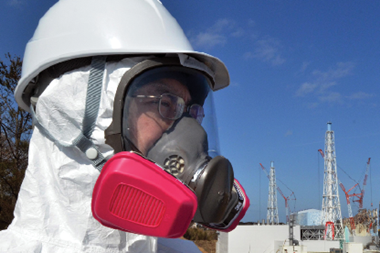Businesses can suffer catastrophic consequences from different types of events, some of which are not catastrophic in themselves
A catastrophe, regardless of its origin, is an event that could severely undermine a company’s financial stability by affecting the resources necessary for production, or even tarnishing its image with possible long term loss of clients. This is doubly a risk where events affecting the company’s ability to produce become frequent.
From this point of view, both natural and technological catastrophes could have a similar impact on the company’s ability to continue to produce.
Specific evaluations of the potential effect of such events allow management to identify and, therefore, implement preventive measures to minimise potential loss.
Catastrophic natural events are inevitable in zones exposed to these risks. Numerous examples of large insured losses come to mind : a car manufacturer suffered a $500 million loss due to a tornado, hurricane Georges (category 2) caused $200 million in losses to a US refinery, the magnitude 7.4 earthquake in Turkey in August 1999 led to a $200 million loss to another refinery, a hail storm of exceptional intensity resulted in a large loss to a car manufacturer in Argentina, a mudslide in Indonesia produced a $140 million loss on an open cut mine, the weight of snow collapsed the roof of a Korean textile factory.
It is not only large scale catastrophes which can affect a company. The automobile industry, for example, is particularly vulnerable to localised events, which are far from the catastrophe category, because production depends on just-in-time supply of products from multiple, specialised suppliers. A small perturbation anywhere along the supply chain immediately affects the production line and can quickly alter the commercial results and the company’s market share. When specific parts are supplied exclusively by subsidiaries of the mother company, it accentuates the effect.
A multiplicity of suppliers may spread the risk of an individual entity being hit, but it also raises the chances of at least one event occurring.
In this case, because any event (even minor) may affect the final production line, the spread of risk paradoxically leads to a negative impact on the company’s risk profile.
An effective catastrophe impact analysis must reflect each individual company’s situation. An analysis of the past loss experience is not sufficient to identify the company’s exposure. A detailed review of all aspects of the business - including its personnel, suppliers, clients, market position, technological advances and strategy - allows the company to address a list of the weak points and analyse possible solutions.
Minimising future losses
The company strategy should guarantee that, in the large majority of cases, the preventive measures will minimise the global loss. For example, a car manufacturer, which suffered a series of catastrophic flood events, financed hydrological analyses to create a zoning map of the flood risk.
The study identified the areas of high probability of flooding in an objective manner.
Using such a model allows a business to generate a more complete series of possible events, and to analyse them in regard to the site characteristics.
The site characteristics can reflect the current situation or simulate new scenarios representing the effects of preventive measures or planned development. Through the systematic analysis of the terrain, this scientific approach compensates for the lack of information on infrequent, historical events. Moreover, as human recollection of historical events is subjective, a model will supply objective estimations of their impact. It appears that, despite all the improvements in construction, the potential impact of the largest catastrophes remains at least at the same level as in the past.
The added value of a model is that it gives the risk manager additional information for the decision making process, in particular the relative probabilities of occurrence for different scenarios. The prevention plan aims both to minimise the impact of the most costly low probability loss and to reduce the accumulation of the most frequent scenarios, which individually represent moderate losses.
The surrounding environment
In spite of sophisticated studies, a prevention plan can fail if the surrounding environment is not considered. Factors to be taken into account to mitigate the risk should not be limited to the company’s property.
In the case of a catastrophe, the company may be liable if it appears that its preventive measures were insufficient or exacerbated the effect of the event on the environment. Conversely, the business itself may suffer if the protection of housing areas is given priority over the protection of industrial zones.
Even the most complete studies can fall through in certain situations.
For example, excluding the impact of the event on the surrounding environment can lead to underestimating the total loss and impair the implementation of the company’s emergency plan. It is normal to rely on infrastructure - railways and roads - but they can also be damaged in an event. In Canada some time ago, a company in the aluminium industry suffered massive losses when a flood damaged the local rail system. Although the company was armed with a state of the art prevention plan for its local site which was undamaged and continued working, it had neglected to consider the surrounding area.
This company relied upon the rail system to transport its production, and unfortunately had not planned alternative means of transport.
Finally, there are cases where preventive measures which target one type of event will actually amplify the effect of another type of event. For example, explosion vents in grain silos work very well in the event of an explosion, but they are fragile when hit by strong winds and rain.
As an explosion is a more frequent event and one which has a more dangerous potential impact on the company and on its personnel, the compromise between solidity and security is quickly made.
Moving is not always the answer
While companies can take preventive measures to limit the impact of these events, major losses remain possible, so a company may choose to relocate to reduce the risk from natural hazards. If it does so, the company must take all critical factors into account. Reorganising a company’s activity in a new site is not an isolated activity. Industries which require proximity to a source of water (river or sea) may be located in flood zones. Even if the activity can be carried on elsewhere, the company has to be sure that the necessary personnel can get to the new location. The new location must offer the infrastructure necessary for importing raw materials and transporting production. The loss prevention plan can then be studied for the new configuration, taking into account revised costs and benefits.
The example below illustrates how difficult this exercise can be.
A producer of precision mechanical parts chose to relocate some of its production to India. The running expenses were drastically reduced and this seemed to be a marvellous way to reduce the company’s risk and increase profits. One factor was unidentified: certain regions in India are earthquake prone. The company discovered this after a major earthquake destroyed its Indian factory, immediately causing a stock shortage in the European operation. Unfortunately, the company had not purchased business interruption insurance, and the business interruption loss resulting from the earthquake was more than the savings initially planned. The company then decided to purchase insurance for future events of this type, so the additional cost of this cover further reduced the benefit of relocation.
Limiting the risk of contingent business interruption
To optimise costs, many companies negotiate exclusive contracts with suppliers. This approach also seems logical for the risk manager because it should reduce the probability of breakdown of supply: one individual supplier is less likely to suffer damage leading to a production delay than at least one among a group of suppliers. On the other hand, limiting the number of suppliers leads to a strong dependence on those suppliers, especially for operations using a just-in-time supply of stock. The risk of contingent business interruption is concentrated on a few suppliers, and if no alternative solution is immediately available to mitigate possible shortage, the catastrophe is amplified. The risk manager is faced with balancing the benefits and drawbacks and selecting the most cost effective solution that is in phase with the global prevention plan.
A catastrophic event does not need to be fatal for a company. It is armed with human resources capable of analysing the situation and funds to implement loss prevention plans. The financial incentives offered through tax reductions or reduced insurance premium rates encourage investment in a solid global prevention strategy. Insurance coverage, when adequate, helps guarantee financial stability for domestic and international operations in the case of an event.
Conclusion
Catastrophes can be the consequence of one major event, a series of smaller events that individually would not have a catastrophic impact and perturbations to supply chains. It is in the interest of each company to do a risk analysis, make a loss prevention plan and put it into action. Even when the company invests in a complete analysis of its exposures, the risk of suffering a major, destabilising loss remains. The loss prevention plan will limit the impact of these situations, weighing the benefits, costs and limitations, and placing them into perspective with the company’s strategy and priorities.
Suzanne Vallet is director of the natural catastrophe service at CCR, the French catastrophe reinsurer. Tony Rosenthal is director of the CCR’s facultative service. www.ccr.fr.

















